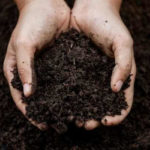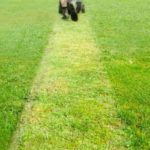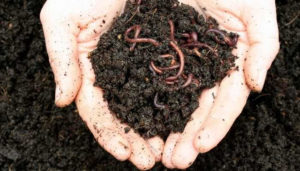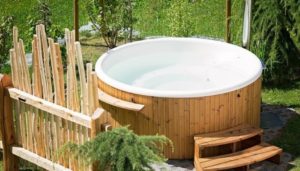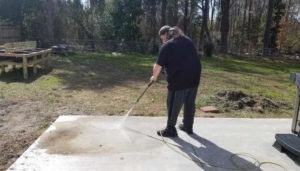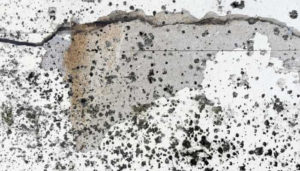You may find that your yard is becoming muddy after winter rains or melting snow. So, what can you do when your yard becomes a mud pit?
You can prevent a muddy yard in the first place by making sure the yard has proper drainage, a healthy lawn, and grass with deep roots. If you wind up with a muddy yard, there are several things you can do to minimize the mess.
If you’ve ever had a muddy yard in winter, you know it’s not fun. You must spend time and money cleaning up the mess inside and out. So, let’s dive into understanding the ‘why’ better and then decide how we can prevent and stop mud from ruining your yard and floor.
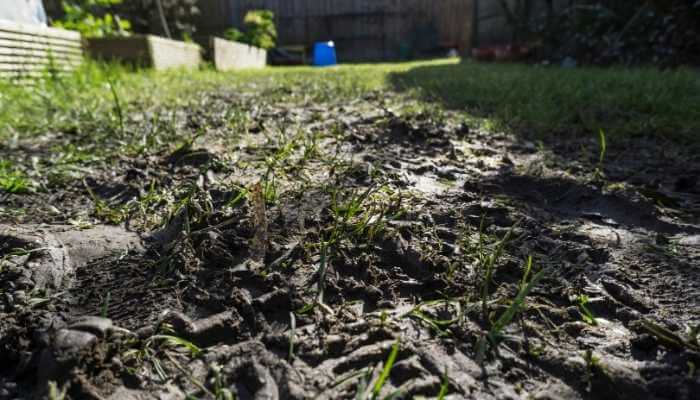
What Causes a Muddy Yard in Winter?
When there are heavy rains, water will collect in low spots or depressions in your lawn. Due to a lack of oxygen reaching the roots of your grasses, the weight of excess water causes these areas to become muddy and soggy.
Winter muddy yards are prevalent in southern states during the winter. There is a lot of rain and just a tiny amount of snow. Add to that soil that hardly ever freezes more than at the surface, which won’t allow water to penetrate the ground or be absorbed by plants.
More water can puddle up if you don’t have good drainage. With all this happening at once, you’re looking at a recipe for mud. Add kids or dogs running around the yard, and the mud only intensifies. Then, it gets tracked inside.
What Can You Do to Prevent a Muddy Yard?
When you realize where water collects most, you can dig drainage channels and fill them with pebbles or gravel. You can even install drainage pipes in your yard to help get the water to run off. Do this before the wet season begins, and you can save yourself many issues with collecting puddles.
1. Plant grasses with deep roots.
These grasses can stabilize your soil and prevent it from washing away. Not only that, but the plants themselves won’t be easily harmed and will stand up to a lot of moisture. Healthy grass will make even stepping through the yard less likely to open spots for mud (though you shouldn’t step on your grass during winter).
2. Use a fertilizer that has less nitrogen and more phosphorus.
This type of fertilizer can help keep your lawn green during the winter months but not so thick that it cannot support snow or ice without getting muddy. Also, if you must use chemicals on your lawn during winter, use all-natural ones that do not contain pesticides or herbicides. By going all-natural, you can make sure the lawn remains healthy and strong throughout the winter months.
3. Don’t leave things on your lawn.
Try to get toys and unnecessaries off your grass. Leaves and pine straws should be used to help insulate plants that need them, not be left on the lawn to kill grass and leave spots for mud puddles. And if you take a yard rake to your lawn in autumn – leaves or not – you can kick up that layer of thatch at the surface so that excess moisture can penetrate the soil.
4. If you have sidewalk tiles or pavers, ensure they are cleaned well and seated correctly in the soil before winter.
This can eliminate water traps beneath them that cause mud puddles or ice dams.
5. You can install a sump pump if your drainage issue is especially bad.
I know a friend who always ends up with standing water when there is heavy rain, so a sump pump was necessary. There are a lot of professionals that can install these devices.
What Can You Do to Stop a Muddy Yard from Getting Worse?
Obviously, the best thing to do would be to not step in the mud. That isn’t always possible. I know in our backyard, the dog doesn’t care that we don’t want her to step in mud and track it in. She’s going to be a dog. So, I’m left with trying to minimize the issues caused by the mud.
You can spread mulch over low spots in the lawn where water tends to collect. I’ve also used wheat hay to spread over muddy areas to keep soil erosion to a minimum. Both are suitable fillers for your yard and act as a barrier between feet and mud.
You can likewise use sawdust, sand, or even wood ash to help dry out a muddy area. Now, this might cause more debris to be tracked in, so it’s best to prepare for that eventuality. Be sure to place a no-slip rug at every door to collect as much mud as possible before it’s tracked into the house. Keeping shoe racks by the door can also help out.
If you have the chance, dig drainage or add drainage even after the fact. You know where the drainage problems are if you have muddy areas. So go to it. It’s better to take action late than never. And speaking of that, you can always plant some quick-growing grass in your bald spots once the mud dries up enough.
In Closing
What do you think? Will you try these preventative measures and management methods to help with a muddy lawn this year? Do you have any suggestions I should add to this list of things to do? Let us know by contacting us!
If you are looking for other potential ways that you may be ruining your lawn, be sure to check out my article on the subject.

